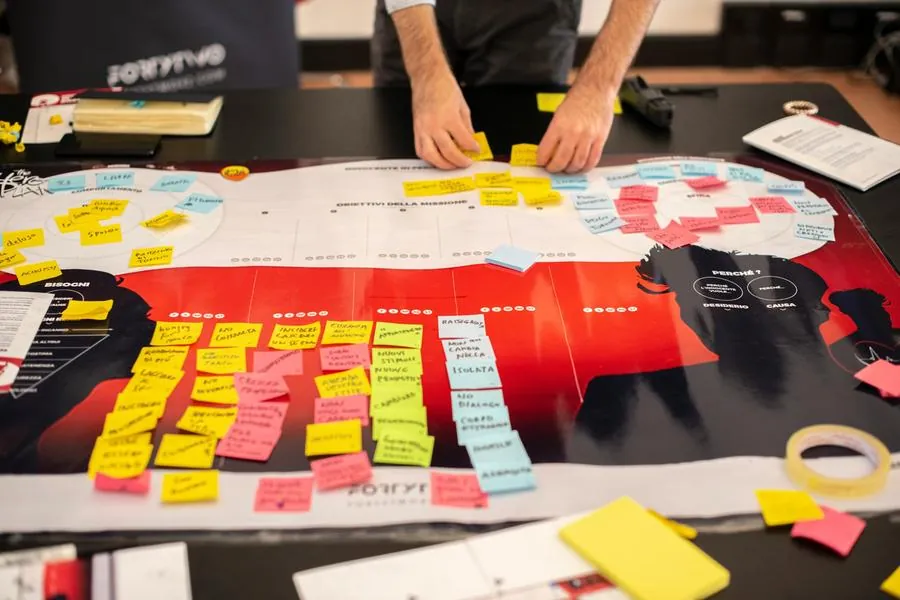Visual Tools to Enhance Business Process Mapping
Business Process Mapping (BPM) requires clarity in visualization to optimize workflows and improve efficiency. The process involves creating diagrams and models to visually represent a company’s operational workflows.
This method helps organizations identify inefficiencies and better understand the interactions between different components of their business processes. With the right visual tools, teams can effectively build a shared understanding and promote compliance, fostering a culture of improvement throughout the organization.

Understanding Business Process Mapping
Business Process Mapping serves as the foundation for analyzing and refining operational procedures within an organization. These visual representations allow companies to articulate how tasks and processes interconnect. The primary goal is to convert complex processes into digestible visuals that anyone in the organization can interpret. To facilitate this task, professionals utilize various mapping tools and software that simplify the creation of these diagrams. A diagram maker for businesses can play a vital role in streamlining this workflow. These diagram-making tools save time by offering drag-and-drop functionality and a variety of templates, giving businesses more time to examine and enhance their operations.Clear and accurate process maps reduce miscommunication, ensuring employees understand their roles within a workflow. These maps highlight redundancies or inefficiencies that may otherwise go unnoticed. Refining these processes can lead to improved productivity, cost savings, and better resource allocation. Organizations that routinely update their process maps remain adaptable, allowing them to respond effectively to changing market demands. Business process mapping acts as both a diagnostic tool and a roadmap for future growth.
Key Features of Effective Diagram Tools
Choosing the right diagramming tool can significantly impact the effectiveness of business process mapping efforts. Features vary greatly among tools, but some characteristics are indispensable. First, user-friendliness should be at the forefront. A tool with a straightforward interface enables users without technical expertise to create process maps efficiently. Another important feature is collaborative capabilities.
Teams often need to work together to build accurate process maps when multiple stakeholders are involved in a project. Effective tools should allow team members to collaborate in real-time, making it easier to share ideas, feedback, and modifications. Built-in templates can save significant time when initiating new projects, making the tools more accessible to users who may not know how to start from scratch.
Benefits of Visualizing Business Processes
Visualizing business processes provides numerous advantages for organizations. Most importantly, it fosters clear communication among various stakeholders. When everyone can visualize the same processes, misunderstandings and confusion often diminish. The shared language created by visuals can lead to better collaboration and innovation. Visual representation allows decision-makers to quickly identify bottlenecks or redundancy in workflows that may impede productivity. This clarity enables the troubleshooting of issues in real-time, resulting in faster problem resolution and a more responsive organization. The impact extends far beyond the particular project at hand, fostering a proactive approach to continuous improvement.Visual process mapping helps with employee onboarding, as new hires can understand procedures more efficiently when shown through diagrams. It supports compliance efforts by providing clear documentation of standard practices, which can be valuable during audits or regulatory reviews. Visualization helps departments match their aims with the larger organizational objectives by providing a wide perspective. It encourages accountability, as responsibilities and task ownership become more transparent. Visualizing business processes empowers organizations to operate with greater efficiency, precision, and adaptability.
Popular Diagramming Tools
Several diagramming tools have gained popularity among businesses for process mapping. These applications cater to diverse needs and requirements, allowing teams to select the platform that suits them best. One notable tool is Lucidchart, known for its intuitive interface and robust collaboration features. Collaborators can provide feedback directly on diagrams, which streamlines discussions and results in more efficient workflows. Another contender is Microsoft Visio, a long-standing industry leader, offering a strong foundation for various business mapping needs. It integrates seamlessly with other Microsoft products, making it ideal for organizations already within that ecosystem. Online options like Miro and Creately are well-suited for remote teams, enabling real-time collaboration and easy access from any location.These platforms offer integrations with project management tools like Asana, Trello, and Jira, making them versatile in connecting process maps to ongoing tasks. Many of them include templates for flowcharts, organizational charts, and customer journey maps, reducing the time needed to start from scratch. Accessibility is another strength, with cloud-based solutions ensuring diagrams remain updated and shareable. Some tools even incorporate AI-driven suggestions to optimize workflows automatically. As businesses evolve, selecting the right tool often depends on balancing ease of use, integration capabilities, and scalability.
Integrating BPM Tools Into Organizational Culture
For any tool to be effective, it must be integrated into the organizational framework. Communication about the importance of BPM is necessary for fostering a culture that values process improvement. Training sessions can follow the tool’s implementation to ensure team members feel comfortable using the new software.
Feedback mechanisms can enhance the tool’s effectiveness. Gathering insights from team members who actively use the mapping tools helps refine processes further and improve usability. Organizations can foster a culture that values employee feedback and adjusts to their needs by actively incorporating staff members in conversations regarding their visual tools.

The Future of Business Process Mapping Tools
As technology continues to evolve, so do the capabilities of business process mapping tools. The trend of automation is pushing many companies to seek advanced functionalities that visualize processes and analyze and recommend alterations. Artificial intelligence has begun to play a role in this aspect, providing data-driven insights that can lead to more informed decision-making. As businesses continue to search for efficiency enhancements, integrating innovative technologies into BPM can lead to remarkable transformations. Data security is becoming an increasing concern for organizations using online diagramming tools. Ensuring that the tools chosen have robust security features is necessary to protect sensitive business information. The importance of visual representation in enhancing business processes cannot be overstated. As tools develop and improve, organizations need to stay abreast of these changes to remain effective. Through a combination of the right features and an emphasis on consistent, clear communication, organizations can unlock the full potential of their business processes. Businesses can create a more cooperative atmosphere that is marked by ongoing development by putting in place technologies that link team members from different departments.










